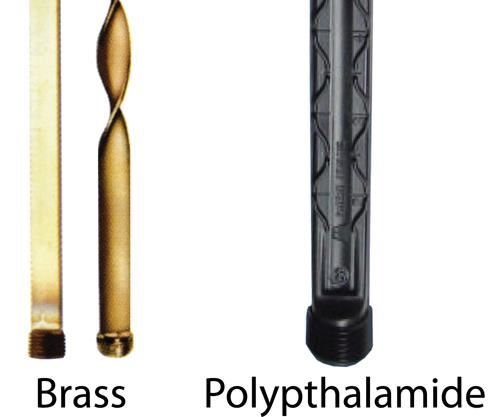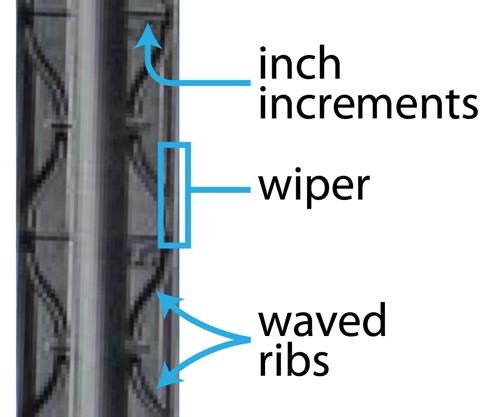Improved Cleaning & Pretreatment
Any mechanic will tell you that, to do a repair correctly, you need to have the right tool for the job.
Any mechanic will tell you that, to do a repair correctly, you need to have the right tool for the job. At Production Paint Finishers Inc. (Bradford, OH), they really take that philosophy to heart.
Founded in 1970 by Larry Francis, who worked as a mechanic in his father's auto dealership, the company today carries on a tradition of not only using the right tools for any job but even of building those tools themselves if need be.
Electrostatic guns used by the company's painters provide a case in point. When the guns' original supplier went out of business, Production Paint evaluated several possible replacements. Painters didn't like any of the new guns, so the company simply designed and built better ones themselves.
"We have a foundry that casts the bodies, a gunsmith that makes the barrels, we make our own electrostatic cables, and we have machine shops that make all our tips, needles and other components," explains VP Allen Francis, part of the second generation currently managing the business. "Everything we buy for that gun is custom-made."
Electrostatic paint application was the company's only service until 2000, when managers added powder coating to the mix. Production Paint Finishers currently employs 130 people full-time and operates out of a 100,000 ft2 facility in the heart of small-town Bradford.
Pretreatment Dilemma
Production Paint Finishers always ran a mix of aluminum and steel parts, and used the same washer regardless of substrate. "Previously, we had a five-stage pretreatment system—alkaline clean, rinse, cleaner/phosphate, rinse, non-chrome seal," Allen Francis recalls. "The iron phosphate contained fluoride to etch aluminum parts. We got good adhesion, and for our market we had good performance."
Recently, as the company picked up more military/defense work, it became obvious that the pretreatment system needed an upgrade. The five-stage system simply didn't meet military standards.
The prospect of modifying cleaning and pretreatment for the vast majority of parts coated in your shop is daunting enough, but Production Paint had additional demands that made the job all the more tricky. The company wanted a system that would be capable of pretreating both aluminum and steel substrates. It had to tie into the existing paint system, fit into the existing building—which is a pretty tight squeeze—and be installed with less than a week of downtime.
"We still needed to supply product to our customers, so we could not afford to shut down for any longer than necessary," Francis says. "We wanted to work with a company that had a good reputation in the industry, that could not only come up with a good solution but implement the solution in an aggressive time frame."
After talking with three potential suppliers, Production Paint Finishers selected Therma-Tron-X, Inc. (TTX; Sturgeon Bay, WI) to modify the existing washer from a five-stage iron phosphate pretreatment system to a twelve-stage trivalent chromium/zinc phosphate system. TTX also designed, built and installed a new wastewater treatment system to handle the switch to zinc phosphate and a combination spray/cure liquid batch booth.
"TTX just seemed like the most thorough of the possible suppliers we talked with. They covered all the bases," Francis recalls. "For example, to match our existing washer and still enable us to do zinc phosphate, they designed the zinc stage with a tapered floor and a filter press. We recirculate the zinc phosphate through the filter to keep sludge down. They even helped us solve problems on our existing washer."
The zinc phosphate stage also includes dual heat exchangers, a setup that enables personnel to clean one exchanger while the other continues on in process.
To meet uptime requirements, TTX fabricated the new stages 7-12 of the washer and shipped them as complete tank and housing sections. The sections were then installed at the end of the existing washer while production was still running on the line.
"At the same time, modifications were also taking place to convert the original five-stage washer into a six-stage," Francis says. "So we had it all set in place and actually connected the new stages to the washer before modifications were complete. Over a holiday we shut down and hooked everything up."
The new cleaner/pretreatment setup handles all parts, whether liquid or powder, steel or aluminum. Production Paint initially considered newer aluminum and steel conversion coatings rather than more conventional trivalent chromium/zinc phosphate chemistries, but decided to go with the proven technology. "Since we do a lot of military work at the facility, we wanted a pretreatment system that satisfies the current CARC specification," Francis explains. "If the new technologies prove out and military specifications are changed in the future, we are poised to move in that direction. But it would be more difficult to design around the new chemistries and then move back to a more traditional process."
The new 12-stage cleaning/pretreatment system includes the stages outlined in the table. It also features RO water haloes between stages to provide make-up water and augment rinsing.
The modified cleaning/pretreatment system includes complete metal hydroxide precipitation wastewater treatment to address the new washer pretreatment chemistries. Rinse water is first pumped to an equalization tank, which is followed by a series of precipitation tanks. After clarification, treated water is discharged to sewer. The wastewater system will handle up to 20 gal/min. Filter cake is non-hazardous and is sent to landfill.
Modified Paint Process
On the finished washer, the first six stages are used for cleaning and pretreatment of aluminum parts; the last six stages are used for processing steel substrates. During a change-over from one substrate material to another, the washer control system automatically turns pumps, burners and other equipment on and off sequentially to be sure the system is ready to handle the switch.
"Operators simply push a button on the control panel. The system starts automatically, shutting stages down or turning them on depending on what we need to do, so that when we switch, everything's already started up and preheated," Francis explains. "If something happens—if, for example, the boiler didn't kick on and the stage temperature is too low—the stage won't turn on."
Whether steel or aluminum, parts enter a dry-off stage before moving to paint on the company's 1,300-ft main conveyor. The first stop in paint application consists of back-to-back booths for electrostatic application of liquid paint.
If parts don't get liquid paint application they are conveyed to two powder booths located immediately after the liquid booths. Both are spray to waste because of Production Paint's part mix and the need for relatively frequent color changes. "This system gives us the flexibility to meet all our customers' demands," Francis says.
After paint or powder application, parts move to an overhead curing oven that operates at a range of temperatures from 200-400°F, depending on the job. Post-finish operations performed at Production Paint include some assembly work, part marking, sealing, sand blasting and special packaging.
With the addition of a new liquid spray/cure booth, waste water treatment system and the washer additions/modifications to run improved aluminum and steel pretreatment processes, Francis believes Production Paint Finishers is well positioned for the future. "We feel that the investment was well worth it and that it will allow us to offer increased flexibility to our customers at or above the quality that they have been used to."
Read Next
A ‘Clean’ Agenda Offers Unique Presentations in Chicago
The 2024 Parts Cleaning Conference, co-located with the International Manufacturing Technology Show, includes presentations by several speakers who are new to the conference and topics that have not been covered in past editions of this event.
Read MoreEducation Bringing Cleaning to Machining
Debuting new speakers and cleaning technology content during this half-day workshop co-located with IMTS 2024.
Read More















.jpg;maxWidth=300;quality=90)



